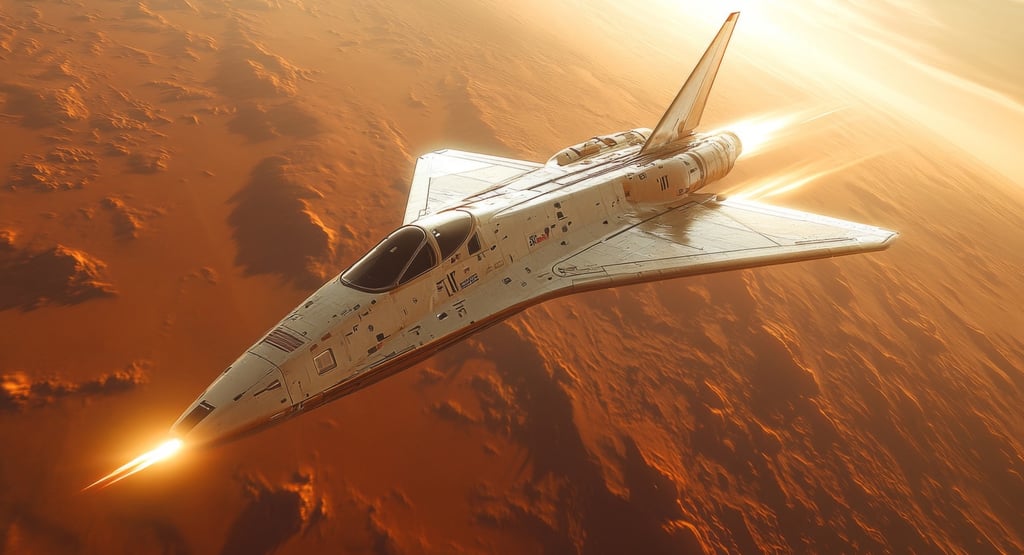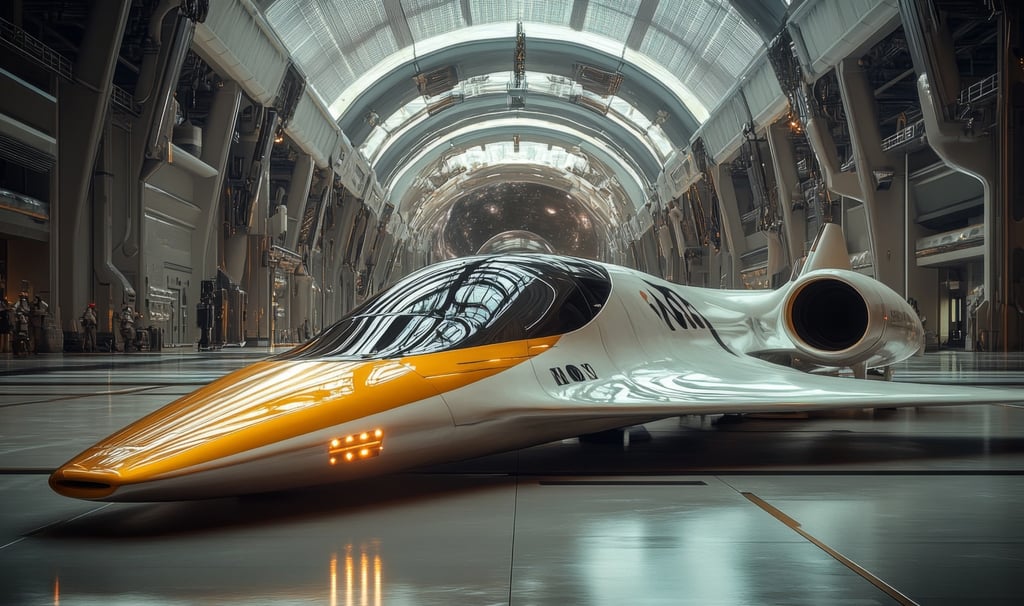Supersonic Flight is Making a Comeback: The Next Era of High-Speed Air Travel
For decades, the Concorde was the pinnacle of luxury and speed in aviation, whisking passengers across the Atlantic in just 3.5 hours at Mach 2.04 (1,354 mph). But after its retirement in 2003, supersonic travel disappeared from commercial skies—until now. A new wave of aerospace innovation is bringing back faster-than-sound flight, with modern advancements in aerodynamics, propulsion, and sustainability. Companies like Boom Supersonic, Spike Aerospace, and NASA are leading the charge, promising to revolutionize air travel once again.
4/24/20253 min read


In this deep dive, we’ll explore:
Why Supersonic Travel Died (And Why It’s Returning Now)
The Key Players in the Supersonic Revival
Technological Breakthroughs Making It Possible
The Challenges: Noise, Regulations, and Economics
When Will We See Supersonic Airlines? (Timeline & Expectations)
Let’s take off!
1. Why Supersonic Travel Died (And Why It’s Returning Now)
The Rise and Fall of the Concorde
The Concorde, operated by British Airways and Air France, was a marvel of engineering but faced major hurdles:
High Operating Costs – Fuel consumption was extreme, making tickets prohibitively expensive (up to $20,000 round-trip in today’s dollars).
Sonic Boom Restrictions – The U.S. and other countries banned overland supersonic flights due to noise, limiting routes to transoceanic trips.
2000 Crash & 9/11 Impact – The Air France Flight 4590 disaster and post-9/11 aviation downturn sealed its fate.
Why Supersonic is Returning Now
Advancements in aerodynamics, materials science, and engine efficiency have made supersonic flight more viable:
✅ Quieter Sonic Booms – NASA’s X-59 QueSST aims to reduce sonic booms to a "sonic thump."
✅ Fuel-Efficient Engines – New turbofans and sustainable fuels cut costs and emissions.
✅ Market Demand – Airlines and business travelers want faster flights to save time.
2. The Key Players in the Supersonic Revival
Boom Supersonic – The Frontrunner
Overture Jet – A 65-80 passenger airliner targeting Mach 1.7 (1,300 mph).
Range: 4,250 nm (NYC-London in 3.5 hrs, LA-Tokyo in 6 hrs).
Airlines Interested: United, American, Japan Airlines (pre-orders placed).
Expected Entry: 2029.
Spike Aerospace – The Business Jet Contender
S-512 Quiet Supersonic Jet – A 12-18 passenger business jet at Mach 1.6.
No Sonic Boom Over Land? – Claims to minimize boom impact.
Expected Entry: 2028-2030.
NASA & Lockheed Martin – The Sonic Boom Solution
X-59 QueSST – Experimental jet designed to produce a "soft thump" instead of a boom.
Goal: Convince regulators to lift supersonic bans over land.
First Flight: 2024, with public tests in 2025-2026.
Exosonic – The Hypersonic Future?
Developing a Mach 5 (3,800 mph) airliner concept.
Still in early R&D but could redefine long-haul travel (NYC-London in 90 mins).
3. Technological Breakthroughs Making It Possible
A. Quieter Sonic Booms
Shape Optimization – Sleek, elongated designs (like X-59) disrupt shockwaves.
"Low Boom" Flight Paths – Adjusting altitude and speed to minimize ground noise.
B. More Efficient Engines
Next-Gen Turbofans – GE and Rolls-Royce are working on adaptive-cycle engines for supersonic efficiency.
Sustainable Aviation Fuel (SAF) – Boom’s Overture will run on 100% SAF, reducing emissions.
C. Advanced Materials
Carbon Fiber & Titanium – Lighter, stronger airframes than Concorde’s aluminum.
Thermal Protection – Better heat resistance for prolonged high-speed flight.
4. The Challenges: Noise, Regulations, and Economics
A. Sonic Boom Regulations
Current Rules: FAA bans civil supersonic flight over U.S. land.
Potential Change: NASA’s X-59 data could lead to new rules by 2030.
B. High Costs & Ticket Prices
Overture tickets may cost 5,000−5,000−10,000 round-trip (cheaper than Concorde but still premium).
Business & First-Class Focus – Airlines will likely prioritize high-paying customers.
C. Environmental Concerns
Higher Fuel Burn – Supersonic jets consume 5-7x more fuel per passenger than subsonic.
Solution: SAF and hybrid-electric concepts in development.
5. When Will We See Supersonic Airlines? (Timeline & Expectations)
2024-2026: Testing & Certification
X-59 QueSST conducts public sonic boom tests.
Boom’s XB-1 "Baby Boom" demonstrator completes test flights.
2027-2029: First Commercial Jets
Spike S-512 could debut as the first private supersonic jet.
Boom Overture aims for airline service by 2029.
2030s: Mainstream Adoption?
If regulations ease, overland supersonic routes (e.g., NYC-LA in 2 hours) could emerge.
Hypersonic travel (Mach 5+) may enter testing.
Conclusion: The Future of Flight is Faster Than Ever
Supersonic travel isn’t just a nostalgic dream—it’s an imminent reality. With Boom, Spike, and NASA leading the way, we could see commercial supersonic flights return by the end of this decade.
Key Takeaways:
✔ 2029-2030 – First supersonic airliners (Overture, S-512) enter service.
✔ Quieter Booms – X-59 could unlock overland supersonic travel.
✔ Premium Pricing – Initially for business travelers, but costs may drop over time.
The race for speed is back. Will you be on board?


Contact us
Copyright © 2025. Ralnoscape All rights reserved.
Destinations
Resources


Follow us
This website uses affiliate links which may earn a commission at no additional cost to you
